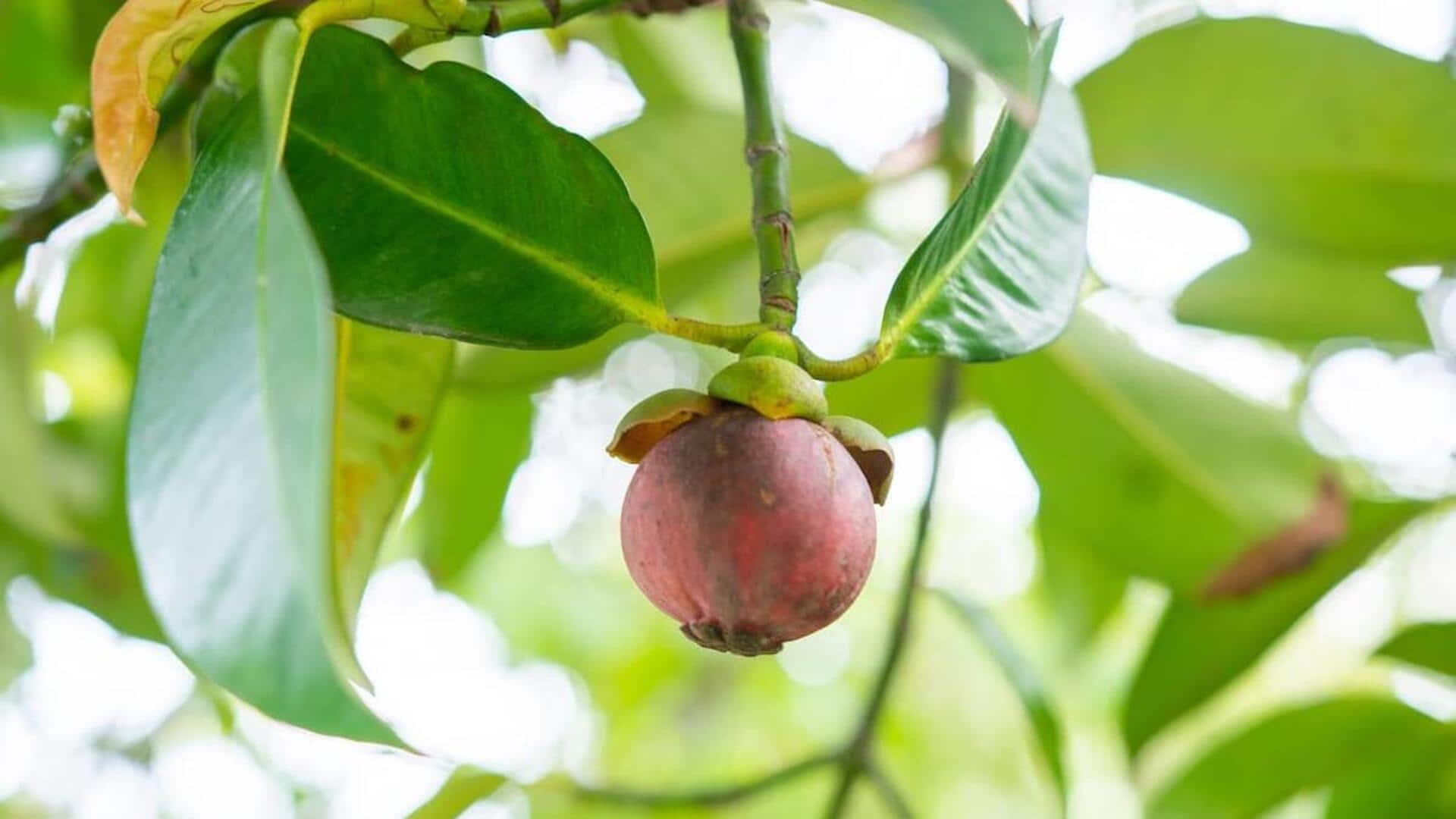
Grow mangosteen at home in 5 simple steps!
What's the story
Growing mangosteen in containers can be an exciting and rewarding experience for gardening enthusiasts. This tropical fruit, popularly known as the "queen of fruits," requires specific conditions to thrive. However, with the right techniques and care, you can successfully grow mangosteen in pots. This article will provide you with practical tips on how to cultivate this exotic fruit in a container garden.
Tip 1
Choosing the right container
Selecting an appropriate container is crucial for growing mangosteen. The pot should be at least 18 inches deep and wide to accommodate the tree's root system. Ensure that the container has drainage holes to prevent waterlogging, which can damage the roots. A sturdy material like ceramic or plastic is recommended to withstand varying weather conditions.
Tip 2
Soil and planting requirements
Mangosteen trees prefer well-draining soil rich in organic matter. Use a mix of potting soil with compost or peat moss to provide nutrients and improve drainage. Plant your mangosteen seed or sapling at the same depth as it was in its original pot. Water thoroughly after planting but avoid overwatering.
Tip 3
Light and temperature needs
Mangosteen trees thrive in warm temperatures between 25 degrees Celsius and 35 degrees Celsius (77 degrees Fahrenheit and 95 degrees Fahrenheit). Place your container in a location where it receives full sunlight for at least six hours each day. If you live in a cooler climate, consider moving your plant indoors during colder months or using protective covers.
Tip 4
Watering and fertilization tips
Consistent watering is key to keeping your mangosteen tree healthy. Water when the top inch of soil feels dry but avoid letting the soil become soggy. Fertilize every four weeks with a balanced liquid fertilizer diluted to half strength, following package instructions carefully.
Tip 5
Pruning and pest management strategies
Regular pruning helps maintain shape while encouraging growth by removing dead or damaged branches. Use clean, sharp tools for cuts to reduce infection risk. Monitor plants regularly for pests like aphids or scale insects, and treat infestations promptly using organic methods, such as neem oil sprays, if necessary.